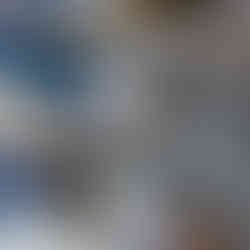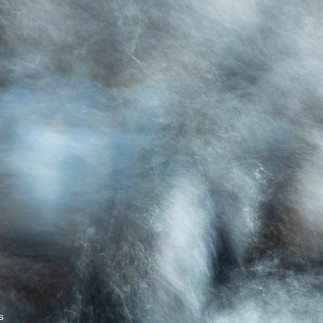Distracted by Playing with Abstraction
- valeriehuggins0
- Sep 2, 2024
- 4 min read
Updated: Sep 17, 2024

Once again in pursuit of somewhere new to photograph, I headed to Bellever Forest on Dartmoor, planning on going for a long walk and taking images of woodland and moorland. The drive there had been full of beautiful vistas, with the gorse and heather glowing in the sunshine of this late summer's day:
But I ended up sat by the river, just yards from the car park, fascinated by the tumbling waters of the East Dart river. I had my new 100-400mm lens to play with. I had also been listening to talks by the amazing Valda Bailey on abstract expressionist photography, how to move beyond replication to originality and her voice was in my head as I experimented.
I sat and watched as the water travelled over the rocks. The blue and white pools and ripples capturing the dark brown reflections of the plants. I took advantage of the long zoom to isolate small sections of the view to create these abstracts:
In one of Valda's talks, there was a discussion about ICM (intentional camera movement) and the 'right' and 'wrong' types of blur. As an avid enthusiast for ICM in my photography, this discussion has lingered with me. As I was sat by the river, I played with some ICM. And I can see what Valda was meaning when she said that the camera movement itself can become the focus of the image, rather than the subject or the emotion that you are trying to capture. Although I like these images, I recognise that my eye is drawn to the lines of light that are created by the camera movement and this is distracting:
whereas in these it is the colour and motion of the water, which instills a calmness, that attract my attention:
In her talk Valda quotes the famous American photographer Aaron Siskind (1903-1991)
" We look at the world and see what we have learned to believe is there, we have been conditioned to expect, but as photographers we must learn to relax our beliefs".
One of the joys of ICM is when you upload the images to the computer for post-processing and you find one that you are really pleased with, as in this case. I had left the shutter open for over 3 seconds, made possible by using an ND filter. The combination of the movement of water and the rolling of the camera creates this ethereal effect. It is far removed from the 'reality' of what I was seeing and yet captures the beauty of the scene, along with my emotional response to it.

Another way to create an abstract image that captures a scene is through using in-camera multiple exposure, as in this example. 3 images, in average blend mode, with some ICM to portray the movement. The layers help to give the feeling of depth as you look into the river.

The challenge that I find with doing this in situ is that I often cannot tell how well it has worked by looking at the screen on the back of the camera, especially if the sun is bright. So, another way to create an abstract is to use photoshop to blend different images together in post production. The advantage is that you can spend time carefully selecting different textures and structures, changing the blend modes, the white balance, the tonal range....... the list is endless! You can also rotate and flip an image and place it upon itself and others, or expand it so you just use a small section. Valda Bailey is an expert at this. After watching her tutorials I realise that it requires not only expertise in photoshop, but endless patience and a willingness to experiment, without knowing where you will end up. Here is my first attempt, using some of the images above:


So much more still to learn! But I am mindful of the dangers. I have to stop myself getting overwhelmed by the vast quantity of amazing images that are posted online, which make me feel inadequate. I tell myself that I am following my own path, and not fall into the trap of comparing my images with others. I also have to overcome the paralysis of indecision, when there are potentially infinitesimal changes that I now know I can make to an image, how do I know which will lead to the best result? I have to say to myself that I don't but if I play I will learn what is more likely to happen and my choices will become better informed.
I go back to Siskind. He was closely associated with the abstract expressionist art movement, which Wikipedia describes as "rebellious and idiosyncratic". As I age and continue to explore my creativity, those are the characteristics that I seem to be aiming for! As Siskind notes: "Photography is a way of feeling, of touching, of loving. What you have caught on film is captured forever... it remembers little things, long after you have forgotten everything."
NB Valda's talks are available on Camversation which offers an amazing range of affordable resources for photographers.
#icmphotography; #multipleexposurephotography; #exploringdartmoor; #belleverforest; #eastdartriverwalk; #lookingforsparkles

























Comments